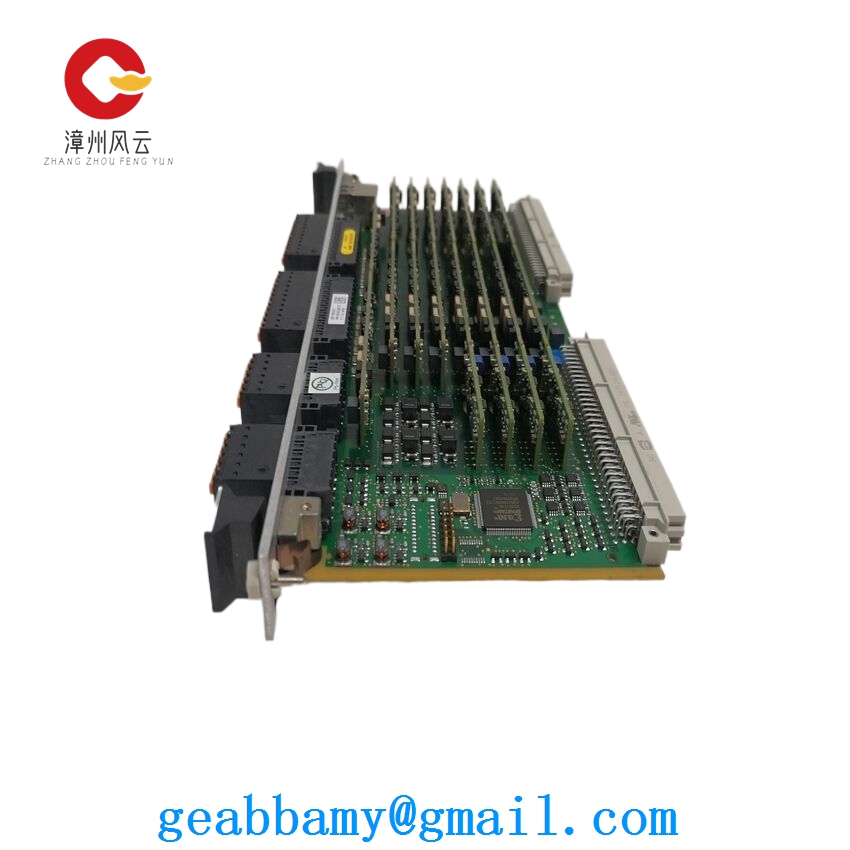Technical Parameters of ABB 3BHB003387R0101 5SXE 05 – 0151 Printed Circuit Board
1. General Information
The ABB 3BHB003387R0101 5SXE 05 – 0151 printed circuit board (PCB) is a crucial component in ABB’s industrial control and automation systems. It is designed to meet the high – performance and reliability requirements of demanding industrial environments.

2. Physical Characteristics
- Dimensions: The PCB has specific length, width, and thickness dimensions that are tailored to fit within the designated space in ABB’s control cabinets and equipment. While the exact measurements may not be publicly available in a generalized sense, it is manufactured to strict tolerances to ensure proper integration with other components.
- Layer Count: Typically, industrial – grade PCBs like this one may have multiple layers. Although the exact layer count for this particular model is not commonly disclosed without in – depth technical documentation, multi – layer PCBs are common in complex control systems to accommodate a large number of electrical connections and signal paths.
- Material: The substrate material of the PCB is likely a high – quality, flame – retardant fiberglass – reinforced epoxy laminate (FR – 4). This material provides excellent electrical insulation, mechanical strength, and thermal stability, which are essential for reliable operation in industrial settings.
3. Electrical Parameters
- Voltage Rating: The PCB is designed to handle specific voltage levels that are compatible with the electrical circuits it is part of. The voltage rating may vary depending on the application, but it is engineered to withstand the normal operating voltages as well as transient overvoltages that may occur in industrial power systems.
- Current Capacity: Each trace on the PCB has a defined current – carrying capacity. The thickness and width of the copper traces are designed to ensure that they can handle the expected current flows without overheating or causing signal degradation. The total current capacity of the PCB depends on the combination of all the traces and the power distribution requirements of the connected components.
- Signal Integrity: The PCB is designed to maintain high – signal integrity, which is crucial for accurate data transmission and control in industrial automation systems. This includes proper impedance matching of the traces, minimizing electromagnetic interference (EMI) through shielding and grounding techniques, and ensuring clean signal paths for analog and digital signals.
4. Functional Features
- Control and Interface Functions: The PCB serves as a platform for various control and interface functions within ABB’s systems. It may contain microcontrollers, digital signal processors (DSPs), or other integrated circuits that perform tasks such as data processing, logic control, and communication with other devices in the system.
- Communication Capabilities: It is likely equipped with communication interfaces, such as Ethernet, CAN (Controller Area Network), or Profibus, to enable seamless integration with other ABB components and external systems. These communication interfaces allow for the exchange of data, control commands, and status information, facilitating the coordinated operation of industrial processes.
- Input/Output (I/O) Functions: The PCB may have a number of I/O ports to connect with sensors, actuators, and other field devices. These I/O ports can handle different types of signals, including analog and digital signals, to interface with a wide range of industrial equipment.
5. Environmental Specifications
- Operating Temperature Range: The PCB is designed to operate within a specific temperature range, typically from – 20°C to + 70°C (or similar ranges depending on the model and application). This ensures reliable performance in various industrial environments, from cold storage facilities to hot manufacturing plants.
- Humidity and Moisture Resistance: It has a certain level of resistance to humidity and moisture. The PCB may be coated with a conformal coating to protect against moisture ingress, which could otherwise cause corrosion and electrical malfunctions.
- Vibration and Shock Resistance: Industrial environments often involve vibration and shock from machinery operation. The PCB is designed to withstand these mechanical stresses without damage, ensuring long – term reliability.
6. Compliance and Certifications
The ABB 3BHB003387R0101 5SXE 05 – 0151 PCB complies with relevant industry standards and regulations. It may hold certifications such as CE (Conformité Européenne), UL (Underwriters Laboratories), or other regional and international safety and quality standards. These certifications demonstrate that the PCB meets strict requirements for electrical safety, electromagnetic compatibility (EMC), and environmental performance.
In summary, the ABB 3BHB003387R0101 5SXE 05 – 0151 printed circuit board is a high – performance, reliable component designed for industrial control and automation applications. Its physical, electrical, and functional characteristics, along with its environmental specifications and compliance with standards, make it suitable for use in a wide range of demanding industrial environments.


